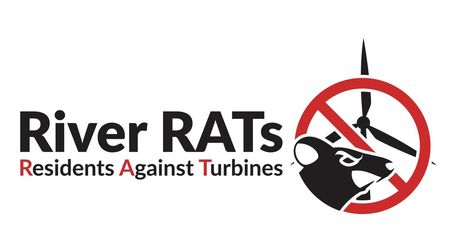Turbine Noise, Shadow Flicker and Infrasound Risks
Since the development and rapid expansion of modern industrial wind turbines about two decades ago, residents living near turbines, researchers, and medical professionals have consistently reported serious and disturbing turbine-induced symptoms and human health implications.
The World Health Organization (WHO) has established that infrasound (20 Hz or lower) and turbine noise can disturb sleep, potentially contributing to hypertension and cardiovascular disease in certain individuals.
Turbine noise, shadow flicker and especially infrasound are believed to cause sleep disturbance, depression, vertigo, posterior head pain, migraine, dizziness, stress, and even cognitive impairment. Other medical doctors are concerned that wind turbines can negatively affect brain development in children.
As industrial wind technology is relatively new, important research to better understand health risks is still being conducted, especially in Europe and Australia where the technology has a longer history of use. Furthermore, Iberdrola subsidiary ScottishPower Renewables (UK) Ltd has been warned by Britain's Advertising Standards Authority (ASA) that it cannot claim that wind farms produce no health effects, as previously advertised.
From Canada and the United States, to Europe and faraway Australia, negative health reactions have been reported. Why would the 1000 Islands community subject itself to these same dangers?
A brief sampling of the latest research and documentation is presented below, with follow-up links to further explore these disturbing health implications.
Health Concerns
"Sleep disturbance, head pressure, posterior head pain, vertigo and balance disorders, cognitive clouding, the feeling of the blade sweep as a thumping pressure in the chest and intermittent heart irregularity."
-David R. Lawrence, MD Internal Medicine, USA
-David R. Lawrence, MD Internal Medicine, USA
"The rhythmic, pumping infrasound from wind turbines stimulates inner ear sensory functions. In people with migraine and sensory hypersensitivity this sensory stimulation can trigger migraine and a central sensory hypersensitivity, causing symptoms such as unsteadiness, dizziness, headache, concentration difficulties, visual disturbances, and more...Several studies have found that living near wind turbines often create severe sleep disturbance and depression. They have also found an increased incidence of dizziness, tinnitus, hyperacusis, headache, increased activation of the autonomic nervous system, etc."
- Håkan Enbom, MD, Inga Malcus Enbom MD, Ear/Nose/Throat specialists, Sweden
- Håkan Enbom, MD, Inga Malcus Enbom MD, Ear/Nose/Throat specialists, Sweden
"There is overwhelming evidence that wind turbines cause serious health problems in nearby residents, usually stress-disorder type diseases, at a nontrivial rate. The bulk of the evidence takes the form of thousands of adverse event reports. There is also a small amount of systematically gathered data. The adverse event reports provide compelling evidence of the seriousness of the problems and of causation in this case because of their volume, the ease of observing exposure and outcome incidence, and case-crossover data."
-Carl V. Phillips, Bulletin of Science, Technology & Society 31(4) 303 –315
-Carl V. Phillips, Bulletin of Science, Technology & Society 31(4) 303 –315
"So please, do not continue to misinform the public outside of Denmark about the true situation for increasing numbers of Danish citizens whose health and sleep is badly affected by low frequency noise from wind turbines. The language barrier between English and Danish will not hide the truth...These health and sleep problems are identical to those being reported around the world by wind turbine neighbors, and also by others affected be other sources of industrial low frequency noise."
- Mauri Johansson, MD, MHH, Specialist in Community and Occupational Medicine, Denmark
- Mauri Johansson, MD, MHH, Specialist in Community and Occupational Medicine, Denmark
Video Resources
|
|
|
|
|
|
Health Effects in Children
"Wind turbines concern me, given my strong knowledge of neurobiology. Due to well-documented disruption to the ''normal'' environment (vibration, noxious repetitive sound) this is potentially a danger to health. There is also a rational fear that families living near these structures are being exposed, and have no reassurance of the long-term effects on health, particularly brain biology. In children, the developing brain is exquisitely sensitive and plastic - it relies on clean inputs to develop normally. Science has no evidence that this abnormal, incessant stimulus does not have long lasting effects on the developing fetal child and adolescent brain. Applying basic principles in fact suggest great danger of disrupting normal human neural networks."
- Chrystella Calvert MD, Canada
- Chrystella Calvert MD, Canada
“I have noticed that we have some children in our district that appear to be having some medical issues related to the wind turbines. Headaches, lack of sleep, and jaw issues seem to be the most common. The students also complain about not being able to sleep or not getting a full night’s sleep due to sound issues.”
- William Mulvaney, Superintendent of Armstrong Schools, Illinois
- William Mulvaney, Superintendent of Armstrong Schools, Illinois
Again we ask - Why put all this in jeopardy for the poorly sited Horse Creek project?
Explore Further

